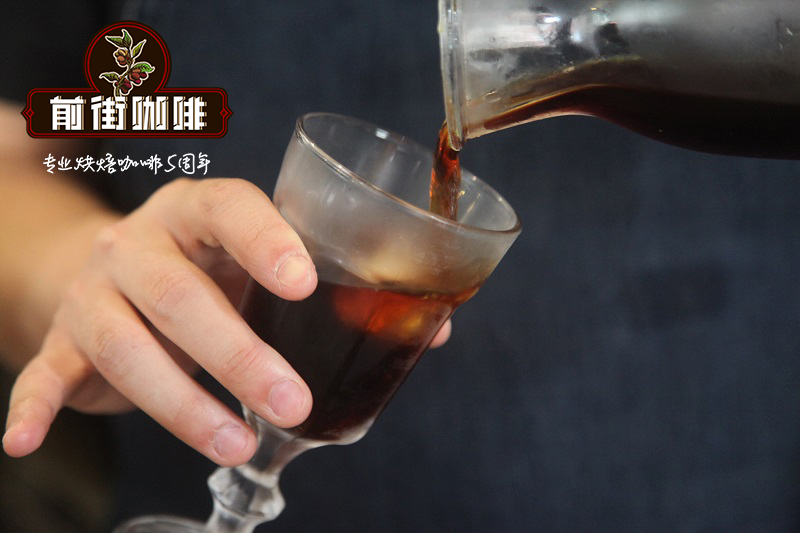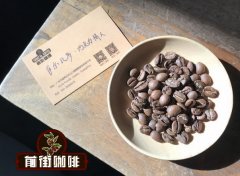What is Java coffee Java coffee? What's the price of Bolivian Java coffee?

Professional coffee knowledge exchange more coffee bean information please follow the coffee workshop (Wechat official account cafe_style)
What are the native varieties of coffee that you often see? Kaddura, Kaduai, Bourbon, Rosa, etc., there is one variety that may be seldom heard, that is Java Java! Front Street Coffee passes a batch of Java coffee from Bolivia, a coffee-growing paradise, which amazes us all. It is close to the floral aroma and citrus flavor of Rosa Coffee.
Java varieties have floral and citrus characteristics similar to those of Gesha.
The local long bean variety in Bolivia gets its name because of its long appearance. Its official name should be Java. Java is a very interesting bean species, which is strongly related to Indonesia. But in fact, Java was originally a coffee tree species born in the primeval forest of Ethiopia, collected by local ethnic groups, and then spread to Indonesia through Yemen, where it was named Java. It was generally believed that Java is a branch of Tibika, but genetic comparison shows that Java is actually a coffee variety Abysinia from Ethiopia.
After Indonesia, Java spread first to the nearby Timor island group, and then to Cameroon in East Africa, where it was first released for farmers in 1980. As for the spread to Central and South America, it was introduced to Costa Rica through CIRAD (the Centre de Coop é Internationale en Recherche Agronomique pour le D é veloppement) in 1991 under the guidance of breeding expert Benoit Bertrand. The first Central American country to formally recognize Java beans was Panama, while Bolivia was introduced through Nicaragua.
As the name suggests, long beans have long fruits and seeds, brass buds, high plants but low yields. Because of its outstanding flavor, it has stronger resistance to leaf rust and coffee fruit disease, so it is very suitable for small farmers.
Important Notice :
前街咖啡 FrontStreet Coffee has moved to new addredd:
FrontStreet Coffee Address: 315,Donghua East Road,GuangZhou
Tel:020 38364473
- Prev

How should I drink Salvadoran chocolate lover coffee? Salvadoran coffee flavor
Professional coffee knowledge exchange more coffee bean information please follow the coffee workshop (Wechat official account cafe_style) some time ago in the front street coffee into some chocolate lovers from El Salvador this bean back, the treatment of this bean is very interesting, 50% washing treatment, 50% honey treatment, this treatment can make the original bourbon varieties through different treatments.
- Next

What kind of coffee is Mantenin, an alpine panther in Indonesia? what is the advantage of coffee over other mantenins?
Professional coffee knowledge exchange more coffee bean information Please follow the coffee workshop (Wechat official account cafe_style) people who love boutique coffee have heard of Manning Coffee, and learn more about Golden Manning, Lin Dong Manning and Tiger Manning. There are so many varieties of Manning, is there any other variety of Manning? The answer is yes! The world of coffee is very
Related
- Detailed explanation of Jadeite planting Land in Panamanian Jadeite Manor introduction to the grading system of Jadeite competitive bidding, Red bid, Green bid and Rose Summer
- Story of Coffee planting in Brenka region of Costa Rica Stonehenge Manor anaerobic heavy honey treatment of flavor mouth
- What's on the barrel of Blue Mountain Coffee beans?
- Can American coffee also pull flowers? How to use hot American style to pull out a good-looking pattern?
- Can you make a cold extract with coffee beans? What is the right proportion for cold-extracted coffee formula?
- Indonesian PWN Gold Mandrine Coffee Origin Features Flavor How to Chong? Mandolin coffee is American.
- A brief introduction to the flavor characteristics of Brazilian yellow bourbon coffee beans
- What is the effect of different water quality on the flavor of cold-extracted coffee? What kind of water is best for brewing coffee?
- Why do you think of Rose Summer whenever you mention Panamanian coffee?
- Introduction to the characteristics of authentic blue mountain coffee bean producing areas? What is the CIB Coffee Authority in Jamaica?

